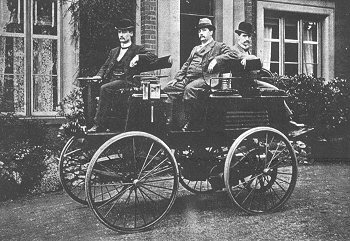The electric car has been at the forefront of the automobile industry. Some of the largest names in car manufacturing have begun to roll out their first generation of EVs. It begs the question: Where did the electric vehicle start? What was it? Let’s take a brief look at the history of the EV.
1800s-Early 1900s The Electric Car Is Born
In the early stages of automobiles, electricity was common. Prior to Henry Ford’s introduction of the consumer automobile, many automakers had experimented with their own EVs.
The concept of electricity was so widely utilized that by the time the first generation of electric cars were selling, it looked like it could have been the first standard vehicle type. By the time the 1900s rolled around, the first electronic cars were making their way across The United States. Many view this as the golden age for electricity. The car wasn’t a consumer wide application to society yet, which meant that most vehicles that ran on roads prior to the Ford Model T, were expensive and only for the elite. The money spent on “cars” at the time went further for R&D. Thus, electricity had a big shot at the start. ‘
Unfortunately, the popularity of the electric car began to decline. As roadways began to develop in the time, many citizens were able to commute longer distances by using gas. Going over 40 miles in the electric car was a challenge and the power of fossil fuels delivered more energy-saving capabilities. Thus, driving distances were easier in standard ICEs.
The Decline
Not only were roadways expanding, but the market for a cheaper, more effective automobile was also seeing an increase. With the invention of the Model T, many people across the country were able to access places they had never thought of going. The original consumer car had a standard ICE. Big oil wanted to make their headway and knew that cars would be a perfect output for their endeavors.
With the invention of consumer autos, the mass exodus to the countryside had begun. Thus, electric cars that could only go 40- miles per charge struggled. Oil became the mainstay and hit the gas as fast as it possibly could. From that point to where we are now, electricity had its comebacks and falls.
The 1950s-70s
Through this period, there were testaments made to show the versatility of electric cars. These designs showcased that electric cars could be built upon and optimized for better performance measures. Almost all-electric cars at this time were one-offs or small production builds. but were able to showcase the ever re-encroaching electric industry.
Around the 70’s large scale oil embargos shifted the focus away from gas-consuming muscle cars and big trucks to compact cars, and hatchbacks. This also paved the way for the emerging Japanese market. These factors greatly increased the awareness of both fuel consumption and society’s dependence on oil. Where electricity wasn’t the focal point, alternative fuels were. With many hippies converting their VW Microbus into a vegetable fuel consumer, the seeds of alternative energy were replanted.
Electric Car Renewal and the GM EV-1
During the 90s, the idea for an electric car sparked life into the industry. Of all companies to utilize electric power, GM was the company that stepped up to the plate. Now the car itself wasn’t bad. Being able to drive 120 miles per charge, the vehicle was developed as a city commuter. The car was a limited release for those interested in being guinea pigs. Some of which was Francis Ford Coppola. Some argue that big oil had a hand in this development, but some were able to save their cars from being crushed. As it stands, the EV-1 is the rarest vehicle developed from the 90s.




